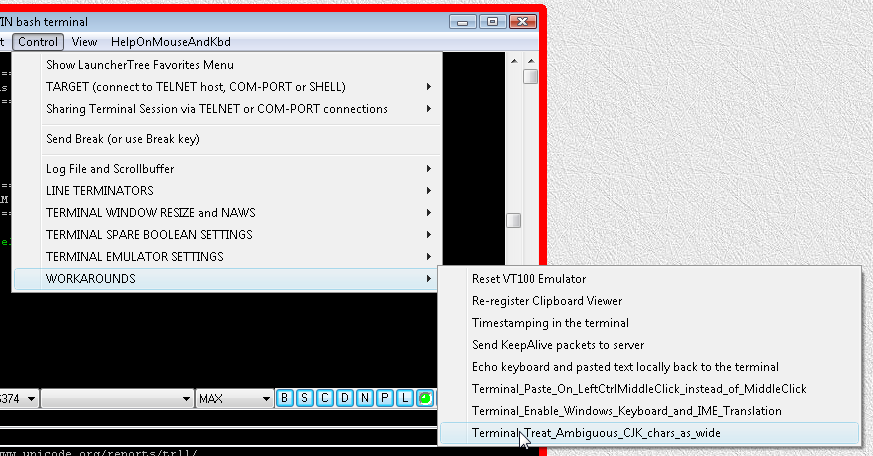Added:
Support for Unicode character display width in terminal based on Unicode Standard Annex #11 East Asian Width for latest Unicode version (6.2.0 at the time of writing of this post). Now all chars in terminal are divided (based on the table from the standard) into the chars that take one column in terminal and chars that take two columns in the terminal (wide chars). This plays well with CYGWIN and LINUX as they are also using Unicode in all software. Bash command line and file names, editing files in vi, navigating file system in Midnight Commander, all work well with double width characters. Double width applies to East Asian languages, that is often referred to as CJK, Chinese Japanese Korean. This includes more than 70,000 CJK characters (75,960 are assigned) that are also referred to as "ideograms".
There is a subset of Unicode Characters that is customary displayed with double-width in East Asian typing context and displayed with single width in Non East Asian typing context. For example, Russian and Greek letters. Those are commonly referred to as "ambiguous CJK chars" and I have added an option to terminal to select whether to treat "ambiguous CJK chars" as wide or as narrow. Default is narrow as it is compatible with CYGWIN and LINUX. This option is present in PuTTY, so I thought it may be useful for some CJK users outside of CYGWIN/LINUX environment.

New option to treat "ambiguous CJK chars" as wide
Fixed:
Four printable keys (",<", ".>", "-_", "=+") were passing through both internal ASCII translation and through Windows international keyboard translation when Windows international keyboard translation was enabled in terminal. As a result, those chars were inputted twice on every key-press.